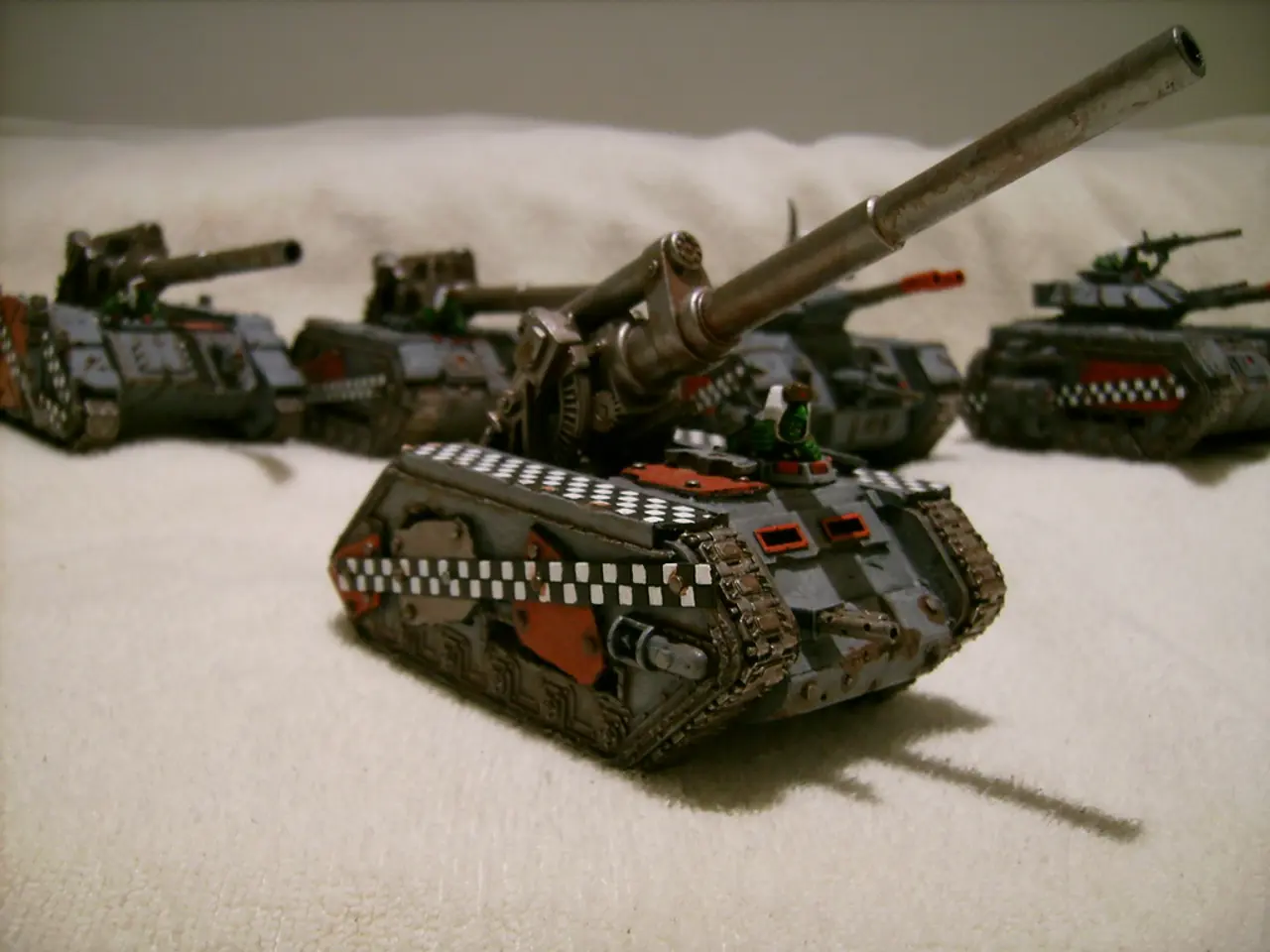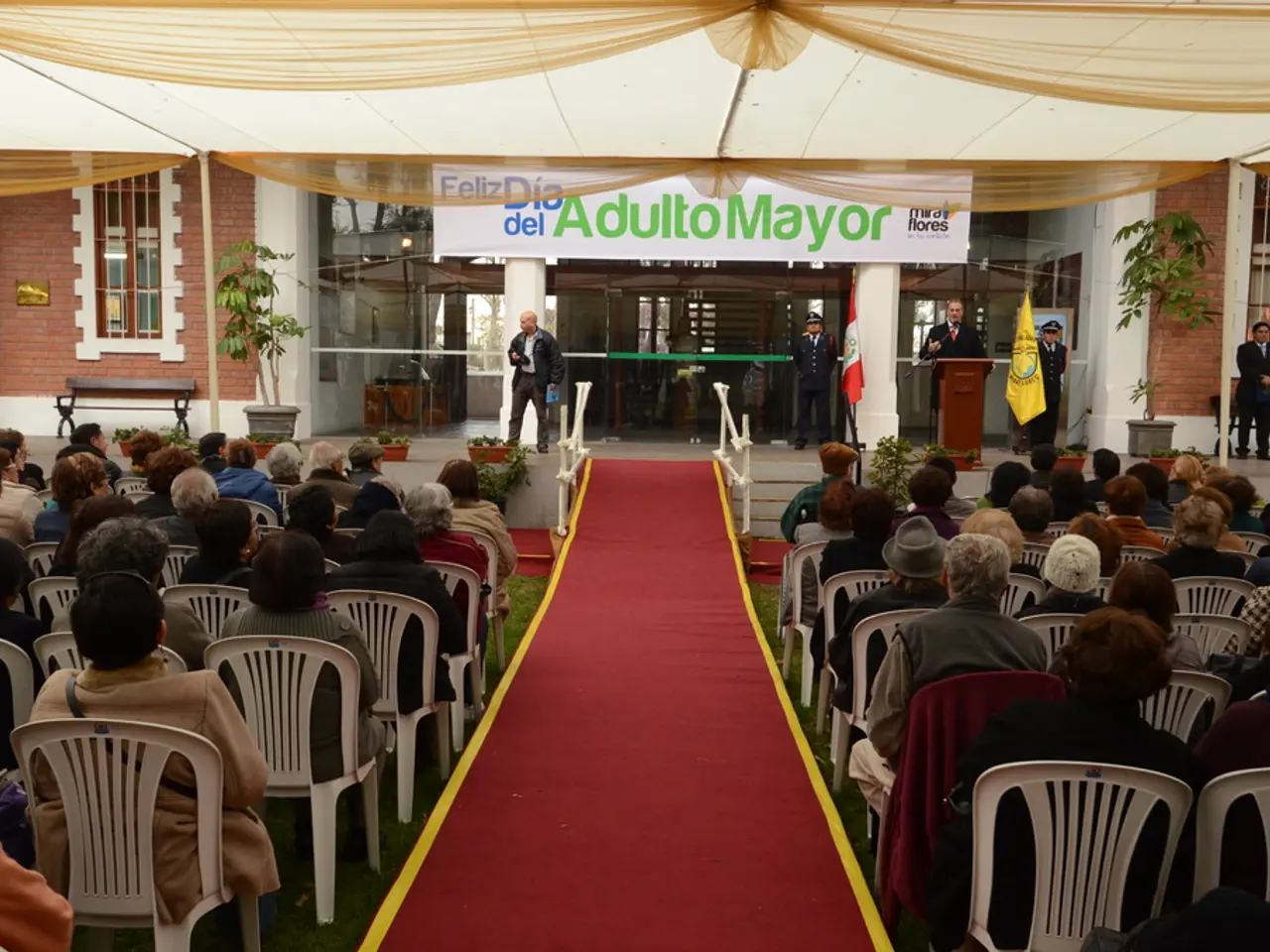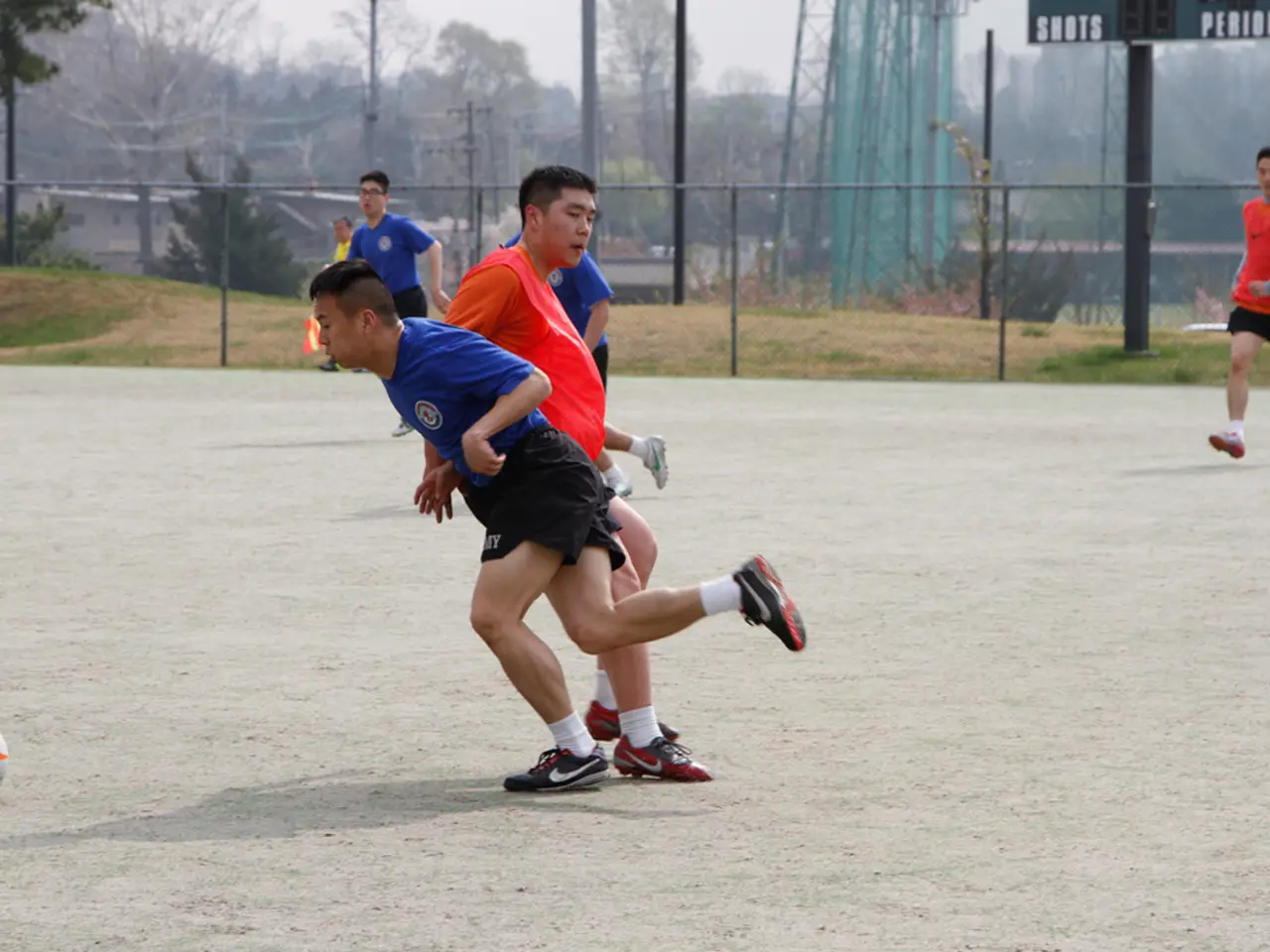Man in Gaza condemns the utilization of aerial deliveries; five days post, he meets a tragic end due to falling debris from the sky
In the coastal region of central Gaza, a tent camp has become a focal point of a humanitarian crisis. The area, now home to a large portion of the region's population, has recently witnessed a series of aid drops, which have been met with controversy and tragedy.
Hisham al Armi, a witness to the events, described the airdrops as the "airborne humiliation of the people." Uday al Qaraan, a 32-year-old medic and father-of-two, was one of the victims. He was killed by a falling aid package five days before this article's publication.
The airdrops, which involved 12 pallets, were carried out by military planes for eight consecutive days between 30 July and 6 August. However, four of the pallets became tangled and fell in pairs, posing a threat to those on the ground. In one tragic incident on 4 August, Uday al Qaraan was among those running after the first pallet to land when he was suffocated under a tangled parachute moments later.
The International Rescue Committee (IRC) has warned that airdrops and Israel’s aid scheme provoke violent chaos and do not effectively reach vulnerable groups, such as children and those with mobility issues. Aid trucks frequently face looting along routes, with UN data showing 88% of aid trucks since May being looted inside Gaza, severely reducing the reach of assistance.
Aid convoys and distribution centers are exposed to active hostilities, including sniper fire, bombardments, and military restrictions, leading to civilian casualties and delays. Despite some operational improvements in border crossings and convoy approvals, sustained access and safer routes remain critical for effective aid delivery.
The Gaza Humanitarian Foundation (GHF) has developed a model to bypass Hamas’s control to distribute aid directly to civilians. However, the model’s effectiveness is undermined by violence at distribution sites and insufficient international support to reduce risks during delivery. Non-governmental organizations like the IRC attempt to maintain nutrition and water services inside Gaza, pre-positioning supplies outside the strip to enable rapid response once access improves.
In his interview before his death, Uday al Qaraan appealed to world leaders to open Gaza's borders. Between 27 July and 1 August, Gaza received an estimated 1,505 tonnes of food aid per day via land routes, which is 533 tonnes short of what the UN's food security agency says is needed. Airdrops added just 38 tonnes daily, amounting to 7% of the shortfall.
The IDF official stated that the airdrops are routed along the coast because much of Gaza's population is now concentrated there. Only one aid plane, a UAE Armed Forces C-130 Hercules, was in the area at that time. Chaos ensued as Palestinians, some armed, tussled over the limited food available. Previous airdrops at this location have also posed threats to those on the ground, as half of the parachutes analyzed in other incidents failed.
The aid drop happened around 11.50am on 4 August, as determined by metadata from six eyewitness videos. The aid drops followed a similar route along the coast, which is densely packed with tent camps. UNRWA claims it has enough food stationed outside of Gaza to feed the population for three months, but Israel has not allowed the agency to bring in any food since 2 March. A gunshot was heard, followed by nine more over a 90-second period.
Amid this crisis, the UAE Ministry of Foreign Affairs did not respond to a request for comment. The situation in Gaza serves as a stark reminder of the complexities and dangers involved in humanitarian aid delivery during ongoing conflict.
- The International Rescue Committee (IRC) expressed concern that airdrops and Israel's aid scheme worsen the situation in Gaza, leading to violent chaos and not effectively reaching vulnerable groups, such as children and those with mobility issues.
- Amid the humanitarian crisis in Gaza, Uday al Qaraan, a 32-year-old medic and father-of-two, was killed by a falling aid package during an airdrop, adding to the complexities and dangers involved in humanitarian aid delivery during ongoing conflict, which involved politics and war.








